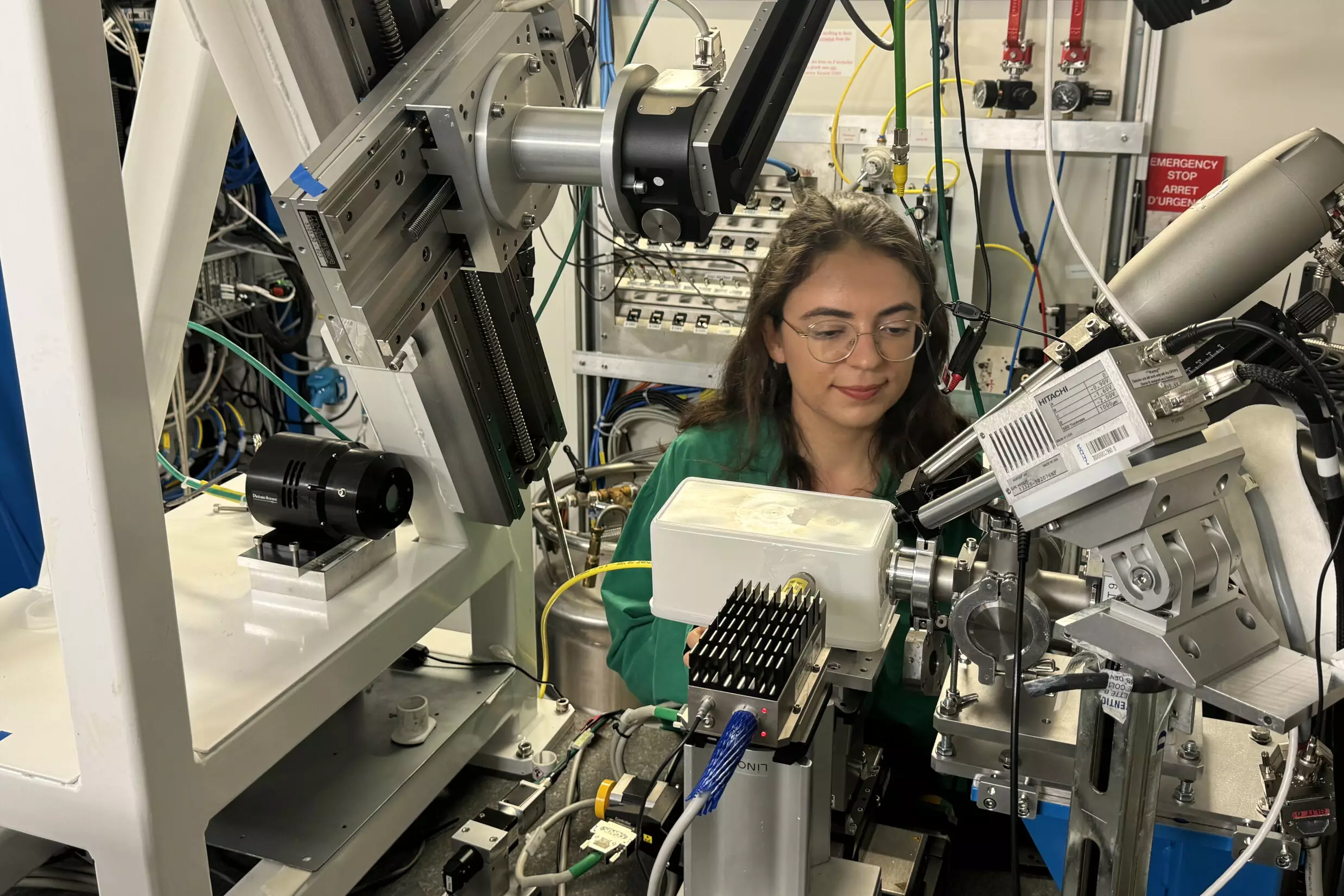Uranium is a multifaceted heavy metal primarily known for its radioactive properties, but beyond this reputation lies a complex world of chemistry and bonding behaviors that has captivated scientists for decades. Being a member of the actinide series in the periodic table, uranium showcases a plethora of oxidation states, each revealing unique chemical characteristics. Despite its reputation, understanding the electron interactions, particularly those involving uranium’s 5f electrons, remains a critical endeavor for researchers looking to bolster our comprehension of this fascinating element.
A recent collaboration by an international team of researchers, published in *Nature Communications*, has highlighted the significant advances made in understanding low-valent uranium compounds through the innovative use of synchrotron light at the Rossendorf Beamline (ROBL). Situated at the European Synchrotron Radiation Facility (ESRF) in Grenoble, this laboratory provides sophisticated facilities designed explicitly for actinide research. Here, researchers aim to dissect the complicated electronic structures that govern uranium’s reactivity and interaction with other elements.
Led by Ph.D. student Clara Silva from the Helmholtz-Zentrum Dresden-Rossendorf (HZDR), the team focused on the unique characteristics of low-valent uranium, a class of compounds possessing a higher electron count in their inner shells compared to traditional uranium compounds. This focus on low-valency offers a refreshing glimpse into how uranium’s chemistry operates at a fundamental level—particularly concerning its intriguing 5f electrons, which, despite being nestled deep within the atom, exert a powerful influence on its chemical behavior.
To unravel the secrets held within these low-valent compounds, the researchers employed resonant inelastic X-ray scattering (RIXS), an advanced technique for studying electronic structures. By bombarding uranium samples with X-rays and analyzing the energy variations as they scatter off the material, scientists can extract valuable information regarding electron interactions and arrangements. This was complemented by the HERFD-XANES method, which merges high-energy resolution fluorescence detection with X-ray absorption techniques, granting researchers an even clearer view of uranium’s electronic architecture.
One of the standout achievements of this research was the direct detection of U(III), a three-valent oxidation state in uranium, showcasing how this element engages with halogens like fluorine and chlorine. This milestone redefines our understanding of uranium’s bonding dynamics and underscores the keen sensitivity of uranium’s 5f electrons to their surrounding environment.
Investigating low-valent uranium is no simplistic endeavor. These compounds tend to be less stable than their higher valency counterparts, necessitating meticulously controlled experimental environments to prevent degradation or unwanted reactions. Conducting the research under anoxic conditions—free from oxygen—and at extremely low temperatures was essential in maintaining the integrity of the samples. Moreover, the complexity of the resultant data demanded high-level theoretical analyses to accurately represent the bonding characteristics and electronic configurations of uranium.
Interestingly, the data highlighted an exceptional sensitivity of uranium’s 5f electrons to their local chemical surroundings. This sensitivity can dramatically alter the ionic character of uranium’s bonds, challenging pre-existing theories about actinide chemistry and paving the way for new research horizons in this field.
The findings extend beyond academic intrigue and possess practical implications, particularly concerning nuclear safety and environmental protection. Low-valent uranium compounds, which are characterized by their diminutive solubility, present a reduced risk of environmental mobility. This attribute is instrumental in optimizing radioactive waste repositories, highlighting the dual significance of basic research in both theoretical exploration and real-world application.
The insights garnered from this study possess the power to reshape theoretical models pertaining to this complex element and will undoubtedly serve as a foundation for future investigations across various scientific domains. This knowledge could lead to advancements in areas such as nuclear science, radiation safety, and environmental chemistry, potentially improving existing technologies and safety protocols surrounding uranium and its compounds.
The research on low-valent uranium compounds marks a significant step forward in the field of actinide chemistry. Through the employment of advanced techniques and a meticulous approach to fundamental research, it not only deepens our understanding of uranium but also holds promise for future innovations in related scientific disciplines.


Leave a Reply